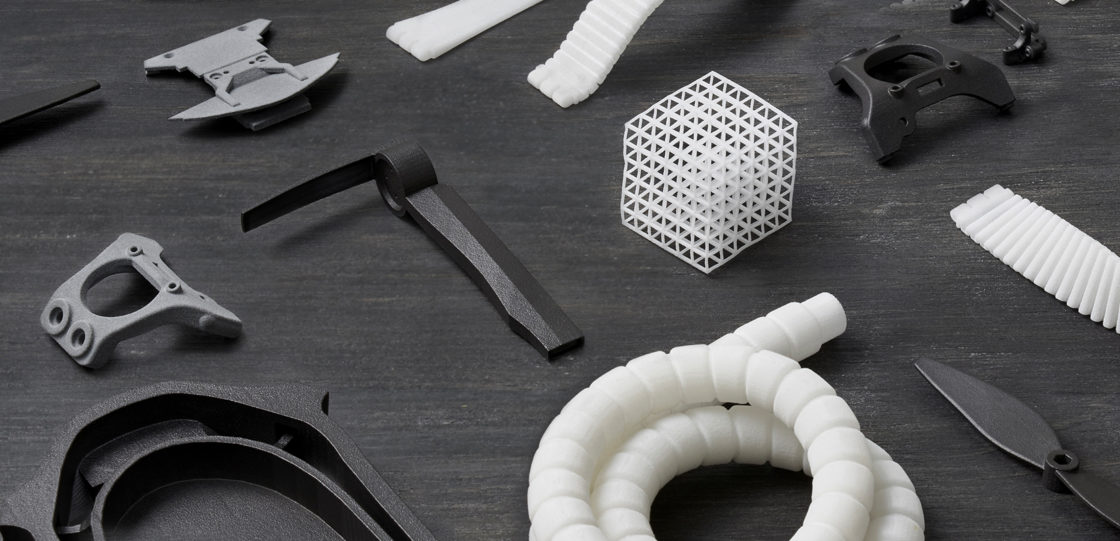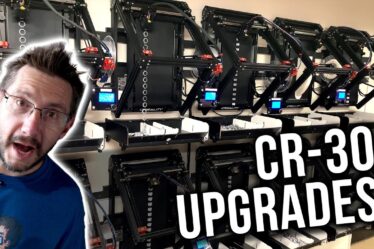
3D printing technology has quickly advanced in the last few decades, facilitating a vast range of innovative projects and new manufacturing and prototyping processes. Additive Manufacturing is known as the process of adding material to form three dimensional objects. Originally created with rapid prototyping as the goal, it has evolved over the years to span numerous industries and is quickly gaining wider adoption as a manufacturing service that facilitates complex, consolidated end parts and customization on a massive scale. Here is a brief history of how 3D printing technology has developed over the years.
1800s – Early Additive Manufacturing Concepts Begin
As far back as the 1800s, ideas surrounding 3D scanning were taking shape in their own way. In 1859, Francois Willeme developed a method called “photographic sculpture” in which he could capture 3D models of human subjects using 24 cameras placed at different angles. Joseph E. Blanther patented an apparatus that used layering to create three dimensional topographical maps in 1892.
1980s – The First 3D Printing Technologies are Born
It wasn’t until the early 1980s, however, that 3D printing technology really began to kick off. Dr. Hideo Kodama from the Nagoya Municipal Industrial Research Institute was the first to invent a layer by layer photopolymer rapid prototyping process. His method was not commercialized, however, and Charles Hull instead became the first to successfully acquire a patent for his Stereolithography Apparatus and coined the term “stereolithography.” His method involved building three dimensional objects layer by layer with photopolymers, cured by a UV light beam. The first object Hull printed was a black eye-wash cup. Hull was also responsible for developing the STL file format, the file that 3D printers most commonly use today. Hull commercialized the process of rapid prototyping and went on to create 3D Systems.
The late 1980s then gave way to a couple more 3D printing technologies still used today: Selective Laser Sintering (SLS), a method which uses a laser beam to melt powder into a solid object, developed by Carl Deckard at the University of Texas in Austin who would later go on to form Stratasys. His early machine “Betsy” was able to print plastic molds for parts. Fused Deposition Modeling, developed by S. Scott Crump & Lisa Crump, was another technology born in the 1980s in which a material is heated and extruded through a nozzle to create an object layer by layer, inspired by the Crumps’ use of a hot glue gun in making their daughter a toy frog. As of 2020, it is the most commonly used 3D printing technology.
1990s – Technologies Develop and Innovations Grow
The 1990s saw the development of many new technologies including Direct Metal Laser Sintering and Binder Jetting. This is also when 3D printing began paving the way for innovations in the medical field with the development of Bioprinting, which involves precisely positioning layers of cells and their supportive structures to create functional tissue. In 1999, the first organ, a human bladder, was created by scientists at the Wake Forest Institute for Regenerative Medicine. They 3D printed a synthetic, biodegradable scaffold to create the bladder which was then coated with the patients’ own cells, thus ensuring the organ would not be rejected. This would allow 3D bioprinting and 3D printing in the medical field to really take shape.
By the 2000s the cost of machines was starting to decrease and 3D printing technology was on its way to becoming more accessible. In 2004, RepRap (short for replicating rapid prototyper), a desktop printer able to print its own components to build another version of itself, was invented by Adrian Bowyer as a way of making the technology more accessible and was the first of the lower-cost printers. The first version of the RepRap printer “Darwin” was released in 2007, and countless new iterations now exist.
2000s – Increase in Accessibility to 3D Printing

3D printing services like Shapeways became more prominent by providing individuals and businesses access to top-tier 3D printing equipment for their manufacturing needs. Our services here at Shapeways allow designers and businesses to upload their own 3D files and have access to a number of cutting-edge 3D printing technologies as well as 75+ materials.
The internet has continued to increase accessibility to 3D printing technology for anyone looking to leverage the power of additive manufacturing. Open source online libraries for 3D printable files are growing constantly and more businesses are transitioning to 3D printing and using Shapeways to produce professional, quality parts.
3D printing has also been incorporated in school curriculums even among young students. Knowledge of 3D printing concepts, technology and software has become a crucial element of STEM education and computer science.
Early Expectations vs. What is Possible Today
Charles Hull began developing his 3D printing technology in the early 80s because he was frustrated by how time consuming prototyping was back then. Almost 40 years later, 3D printing technology has indeed become the fastest and most cost-efficient way of producing prototypes and has evolved to play important roles in the manufacturing process for many industries. In the past decade, there have been countless innovative projects undertaken using additive manufacturing as the technology continues to develop. Equipment costs have decreased while print quality has increased and the printing process is much faster and more efficient.
It is now possible to create thicker layers and more accurate, complex shapes than ever before, which has facilitated a shift from prototyping alone to the production of end parts. Customization is more achievable and affordable with 3D printing than any other manufacturing process, so businesses can more easily offer personalization options to their customers. 3D scanning and printing technology have also allowed for major innovations in the medical field where patient-specific customizations have helped improve and even save lives.
What started as a way of producing plastic prototypes has turned into a dynamic technology whose applications continue to grow. As of 2020 we are seeing more and more companies integrate additive manufacturing into their product development, design and production processes and seeing the scale of new projects and innovations expand. Ready to take advantage of the additive manufacturing for your business? Find out how Shapeways can help!

